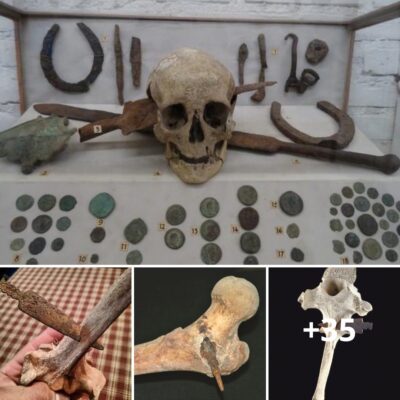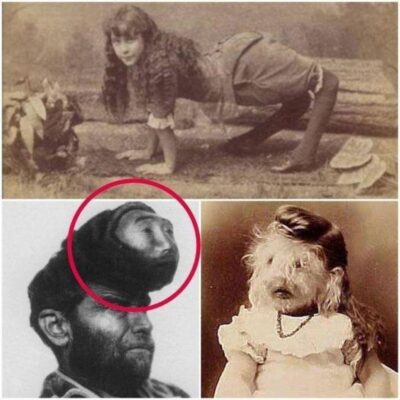A bizarre medieval ‘dancing skeleton’ has been unearthed in Siberia, with archaeologists saying they are ‘amazed’ by his pose.
The ‘Dark Ages dancer’ is believed to have been aged around 30 when he died between the seventh and ninth century AD.
But experts fear there may be a sinister explanation to the body’s strange posture – that for unknown reasons it was tied up when it was buried.

A bizarre medieval ‘dancing skeleton’ (pictured) has been unearthed in Siberia, with archaeologists saying they are ‘amazed’ by his pose.
Archaeologist Denis Volkov, 35, said: ‘He was laid to rest on his back, with his legs looking as if he was dancing.
‘His feet were crossed and knees wide open and his arms were crossed around his pelvis.’
‘None of the known burial ceremonies include this position of a body.’
The dancing skeleton has been nicknamed Mikhail by archaeologists, who said they were struck by his unusual position.

‘We talked to forensic experts, anthropologists, and it was clear that if his legs were not tied, then his extremities would have straightened,’ Mr Volkov said.
‘Most likely, his arms were tied too.’
Yet there are no examples of other human remains being tethered in Siberian graves from this era.
And this is not the only reason the skeleton is an anomaly at the Ust-Ivanovka burial site in the Primorsky region of the Russian Far East.
The ‘Dark Ages dancer’ is believed to have been aged around 30 when he died between the seventh and ninth century AD
Other bones here belong to medieval geriatrics, people who had lived unusually long lives for the time, with ages ranging between 50 and 70.
The ‘dancer’s’ grave was rectangular, and covered in white sand which was not local, while others were circular.
There is also some evidence that the he was shot to death with an arrow.

A tip appears to be buried in his hip.
However, it was common at the time for people to be buried with arrow tips, so further research is needed.
The dancing skeleton has been nicknamed Mikhail by archaeologists, who said they were struck by his unusual position. Pictured are some of the archaeologists as they excavate the skeleton at a burial site in Siberia

‘The man is believed to be from the Mohe stratum of the Tungusic ethnic group, but further studies are needed,’ reported The Siberian Times.
Archaeologists are examining another theory for the man’s unusual death dance.
It is that he might have suffered deformations due to tuberculosis or syphilis.
Further research is underway on the ancient bones.











